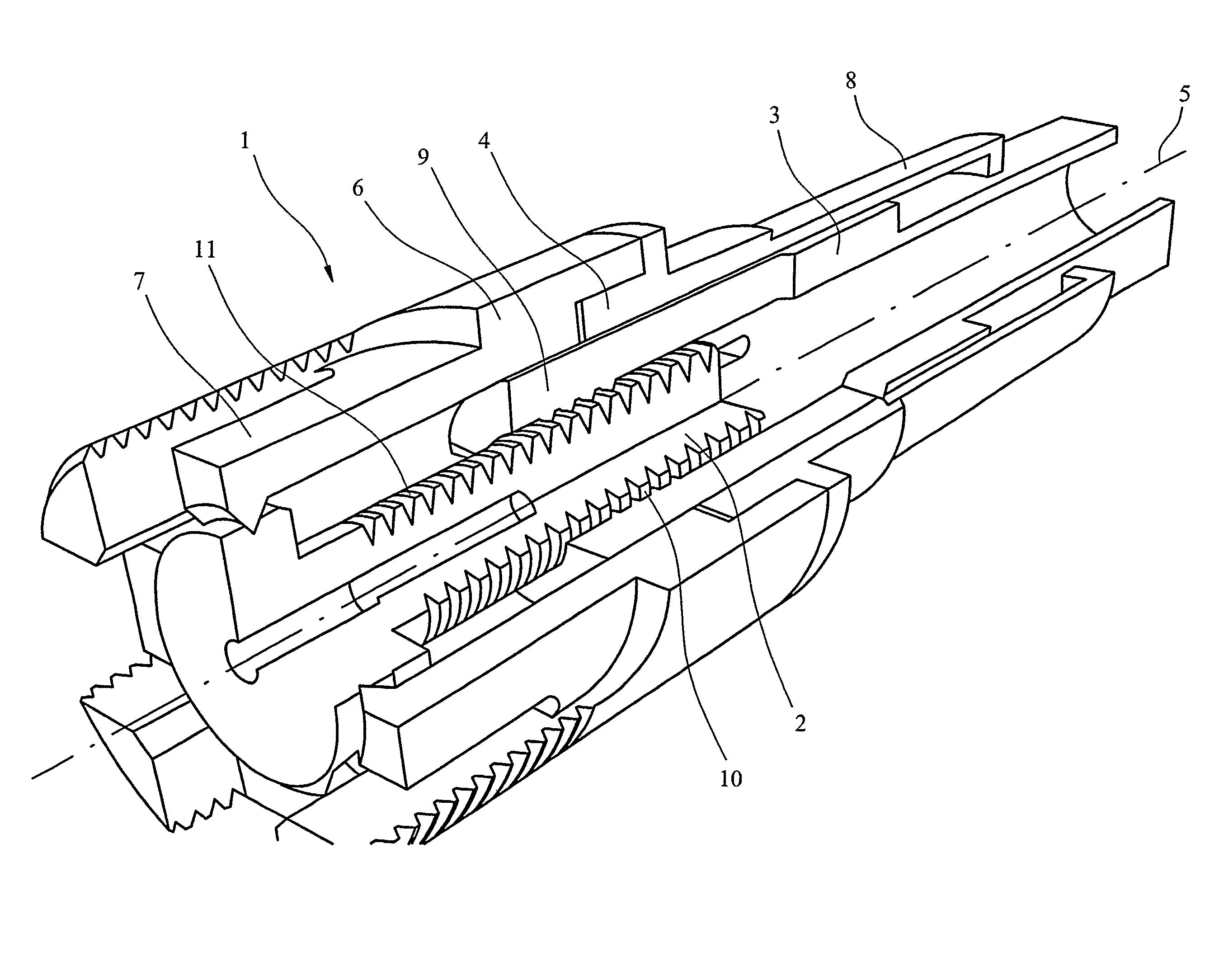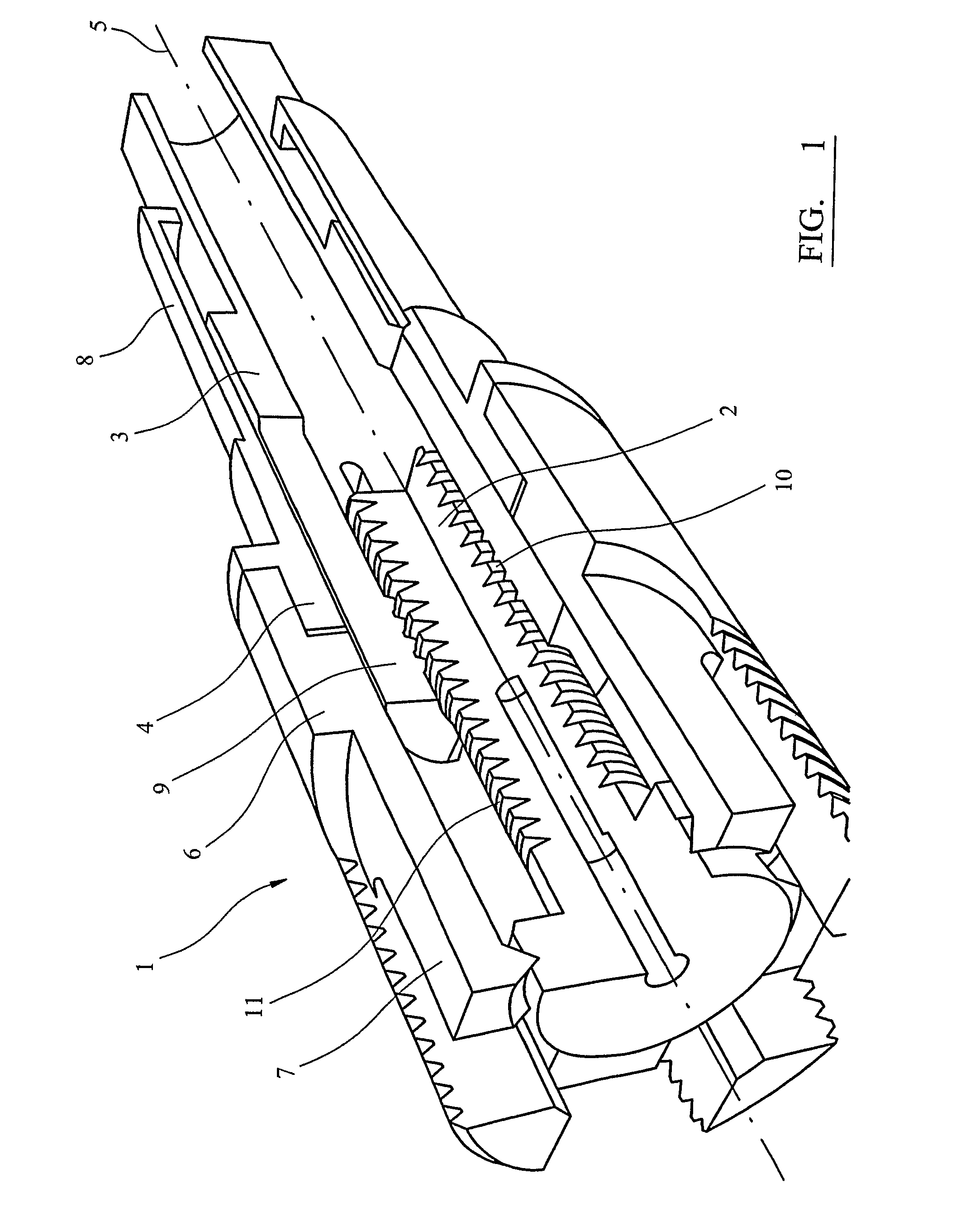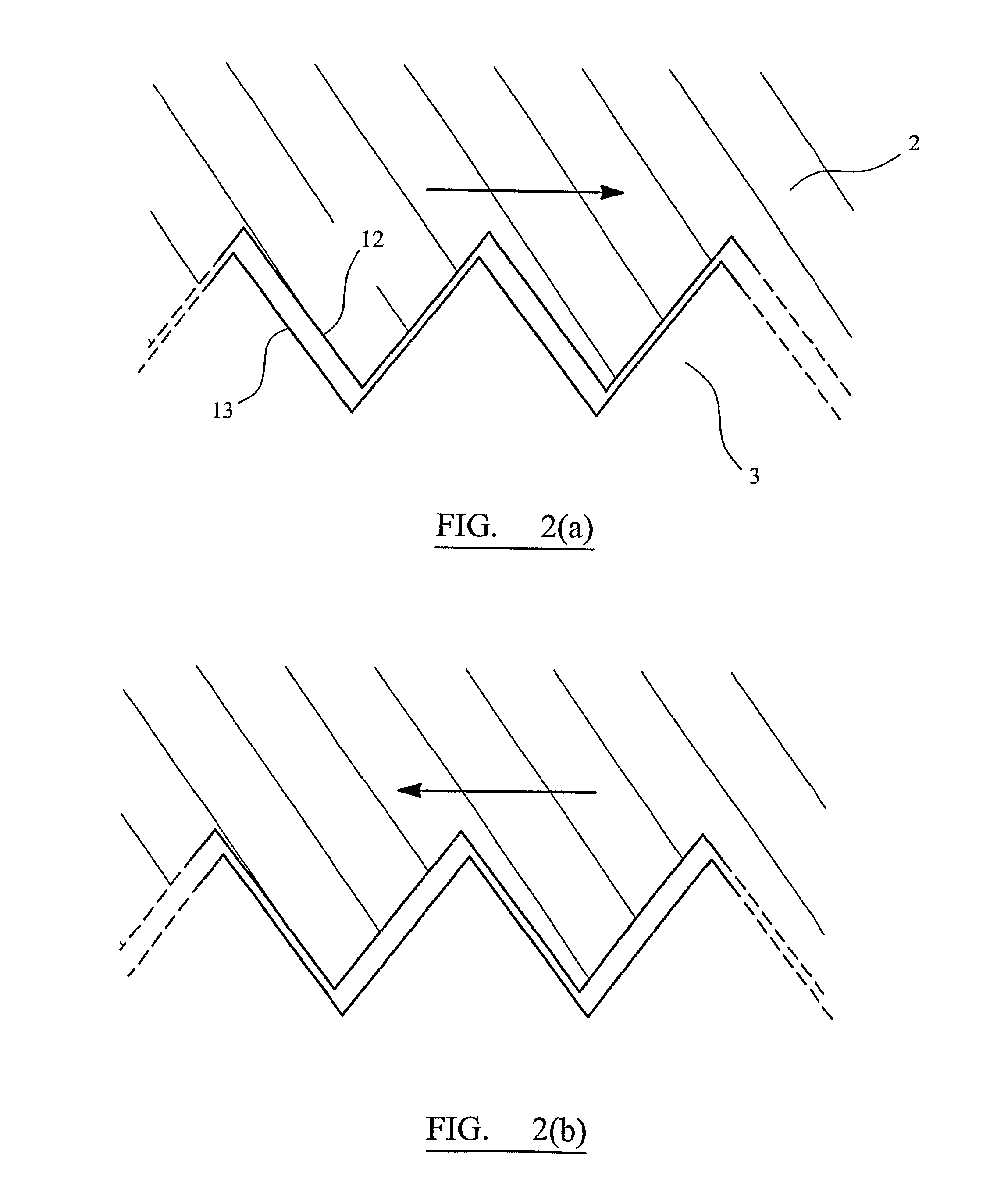Linear actuator
- Summary
- Abstract
- Description
- Claims
- Application Information
AI Technical Summary
Benefits of technology
Problems solved by technology
Method used
Image
Examples
Embodiment Construction
[0069]Shown in FIG. 1 is a linear actuator 1 according to the invention. The linear actuator 1 comprises a drive arm 2 and an extension arm 3 both partially received within a housing 4. The drive arm 2 and extension arm 3 both extend along a common drive axis 5.
[0070]The housing 4 comprises a housing body 6. A plurality of holding fingers 7 extend from the housing body 6 and grip the drive arm 2 therebetween. The holding fingers 7 constrain the drive arm 2 such that it is free to rotate about the drive axis 5 but cannot be displaced along the drive axis 5. The holding fingers 7 are described in more detail below. Similarly, a plurality of gripping fingers 8 extend from the housing body 6 and grip the extension arm 3 therebetween. The gripping fingers 8 constrain the extension arm 3 such that it is free to be displaced along the drive axis 5 but resist rotation of the extension arm 3 about the drive axis 5. Again the gripping fingers 8 are described in more detail below.
[0071]The end...
PUM
 Login to View More
Login to View More Abstract
Description
Claims
Application Information
 Login to View More
Login to View More - R&D
- Intellectual Property
- Life Sciences
- Materials
- Tech Scout
- Unparalleled Data Quality
- Higher Quality Content
- 60% Fewer Hallucinations
Browse by: Latest US Patents, China's latest patents, Technical Efficacy Thesaurus, Application Domain, Technology Topic, Popular Technical Reports.
© 2025 PatSnap. All rights reserved.Legal|Privacy policy|Modern Slavery Act Transparency Statement|Sitemap|About US| Contact US: help@patsnap.com



